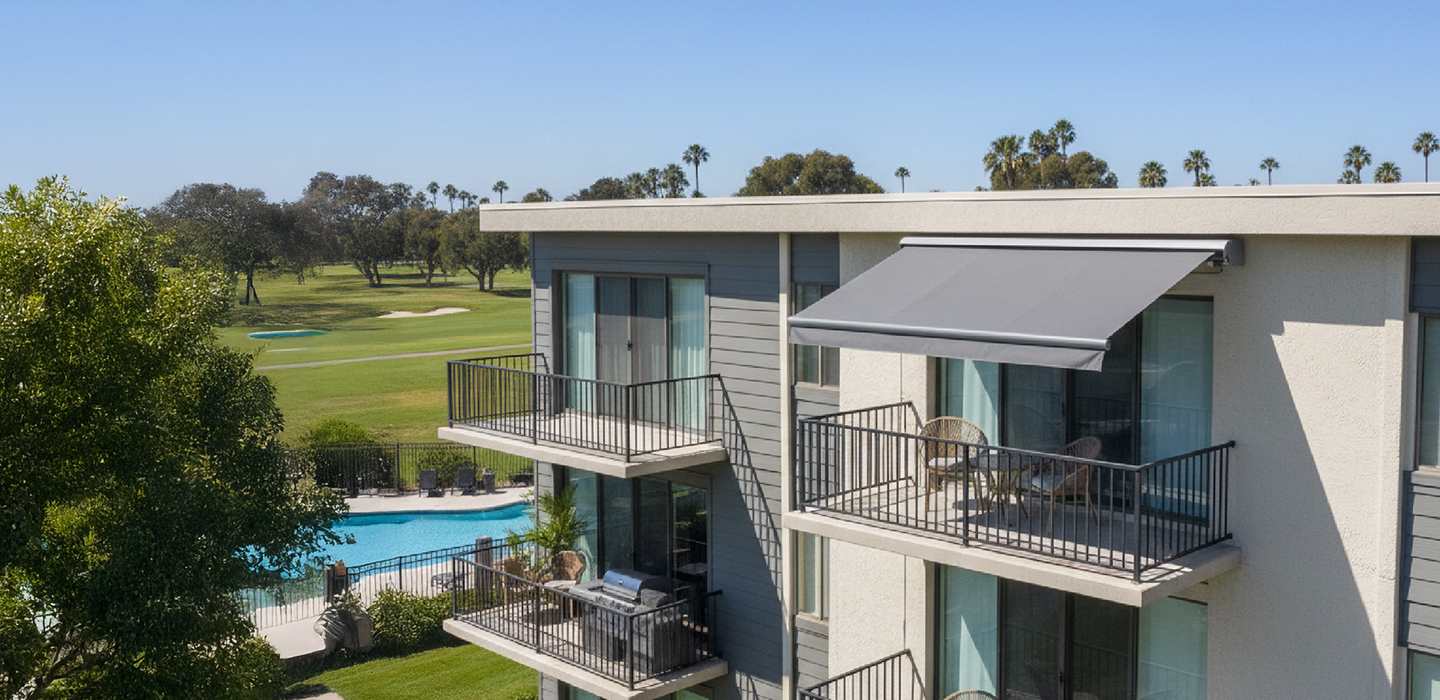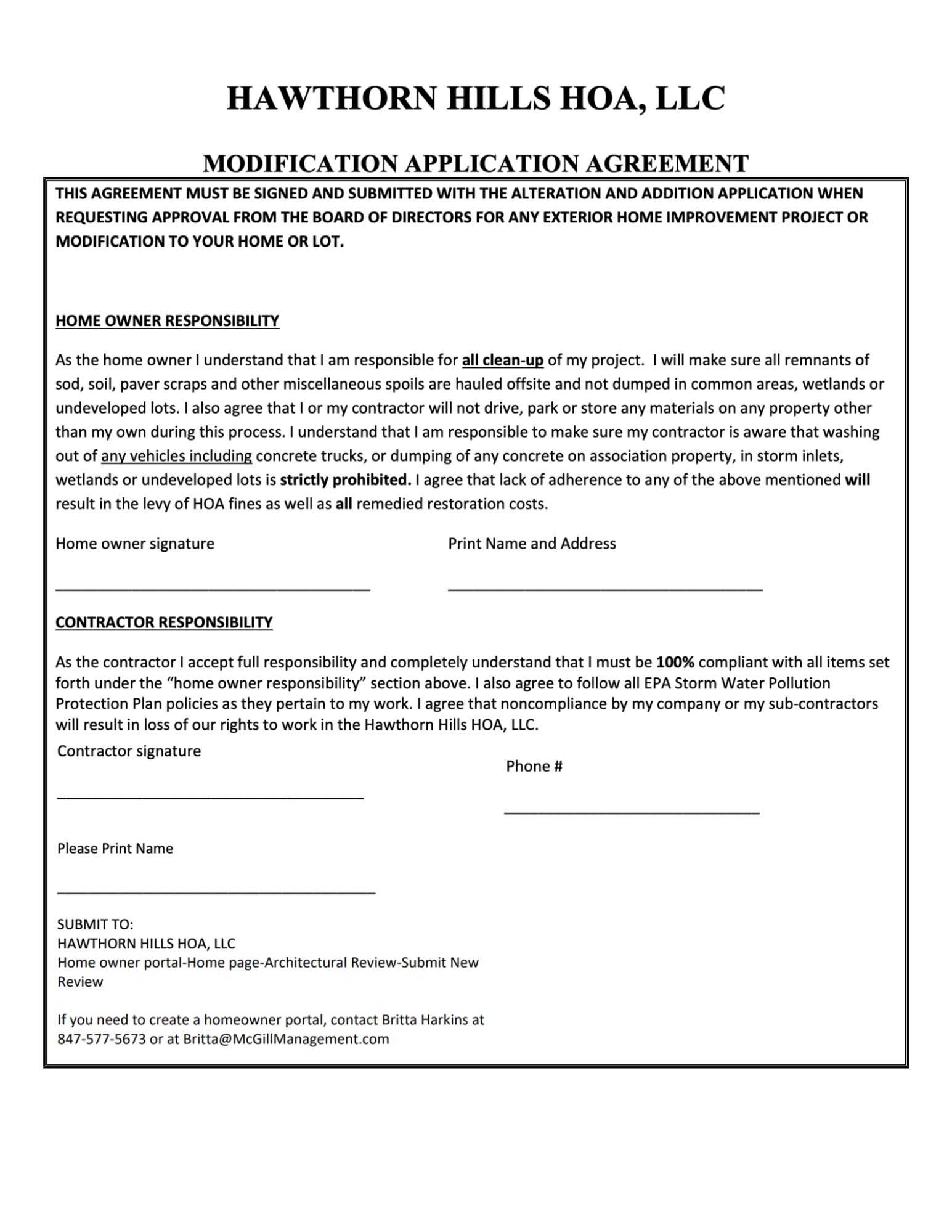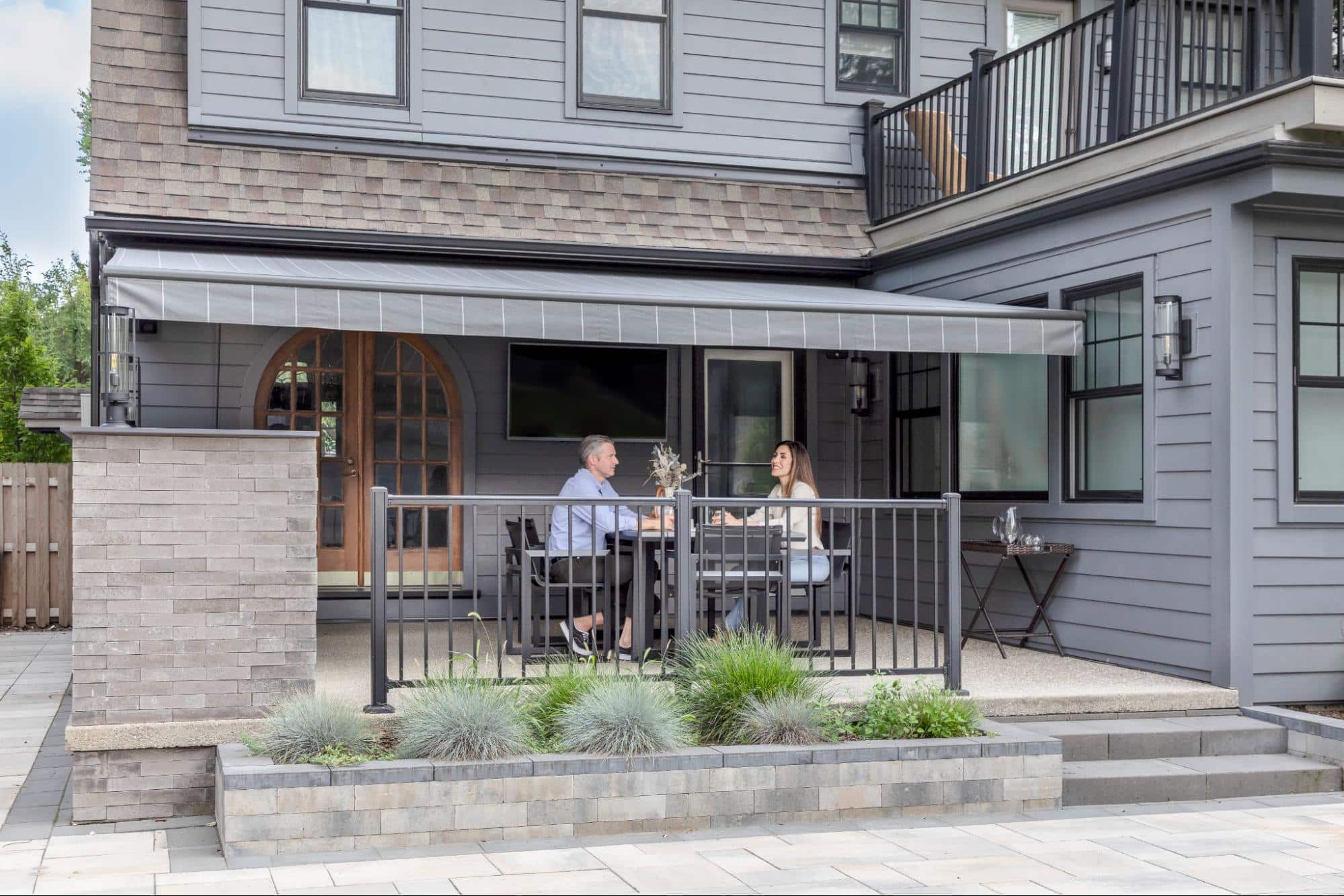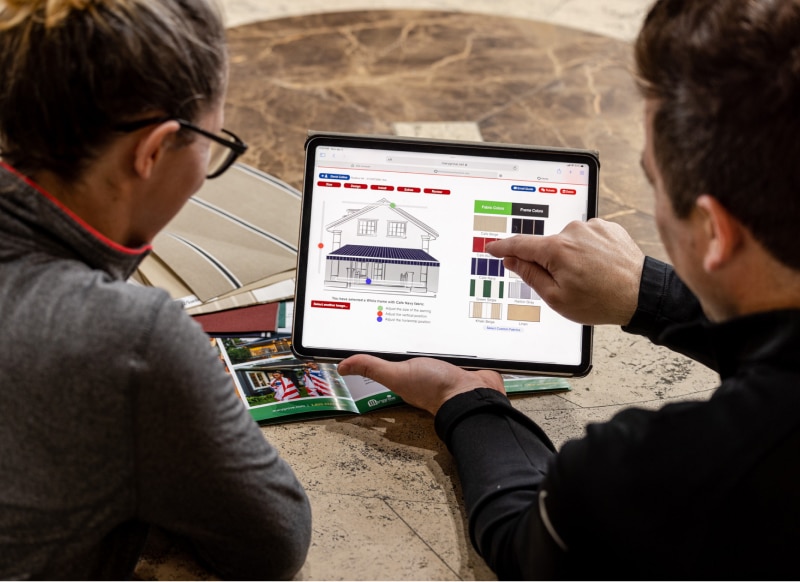Most condo HOAs allow awnings, but only with written approval. You’ll need to submit color samples, installer details, and design plans that meet your building’s uniform appearance and safety standards before installation.
Getting HOA Approval for Your Condo Awning the Right Way
Condo HOAs manage shared exteriors, so installing an awning means working within their guidelines.
While that may sound limiting, it’s not a roadblock, just a structured process to keep properties safe, uniform, and visually appealing.
Here’s what you need to know before you begin:
- Always apply in writing: Verbal approvals don’t count.
- Prepare your documents: Include drawings, color samples, and contractor info.
- Stay compliant: Use HOA-approved colors and retractable styles.
- Stay patient: Most reviews take up to 30 days.
- Keep records: Save all emails and written confirmations.
Taking the time to understand your HOA’s process protects both your investment and peace of mind.
Because when you know the rules, getting approval isn’t a battle, it’s just the beginning of building the outdoor space you’ve been dreaming of.
Inside the HOA Rulebook: Understanding Condo Awning Rules

A condo HOA manages all shared areas, enforces community standards, and handles maintenance for the building exterior.
Since every resident’s unit is part of a larger shared structure, one person’s modification can affect the building as a whole.
That’s why HOAs review and approve any visible additions such as awnings, pergolas, or shades.
Common Elements and Shared Ownership
In most condo communities, exterior walls, balconies, and facades are considered “common elements.”
These areas belong collectively to all residents through the HOA.
Because of that, attaching anything permanent, like an awning, requires permission. It’s not just about aesthetics; it’s about protecting the structural integrity and fairness for every owner.
Maintaining Consistency and Safety
Condo boards focus on two main goals: keeping the property safe and maintaining visual harmony.
Their rules often specify what colors, materials, or mounting styles are allowed. They may also require proof that the awning can handle local wind loads or weather conditions.
These steps protect both the community’s look and each resident’s investment.
Regional Differences
Rules vary depending on climate. In coastal areas, HOAs often prefer reinforced or wind-rated awnings.
In hotter regions, they may require lighter fabrics that reflect sunlight and reduce heat buildup. The goal is always the same, balance comfort, durability, and design uniformity.
Knowing how your HOA operates and why these rules exist helps prevent frustration later.
Once you understand the reasoning, you can move confidently into the next phase, getting your awning approved without the stress.
Helpful Resource → How to Work Outside with a Laptop & Mistakes to Avoid
Getting HOA Approval Without the Headache

Once you understand your HOA’s role, the next step is getting your awning officially approved.
This isn’t about jumping through hoops, it’s about avoiding fines, rework, or removal orders later. A little preparation upfront can make the process smooth and stress-free.
Always Get Written Approval
A friendly “go ahead” from a board member or neighbor isn’t enough.
You need written confirmation before starting any installation. HOAs treat verbal approvals as unofficial, and if board members change, your word agreement won’t protect you.
Always keep email records and a signed approval letter.
Prepare a Complete Submission

Most HOAs require a detailed application package that includes:
- Drawings or photos of the proposed awning
- Color and fabric samples
- Installer information, including proof of license and insurance
- Product details like dimensions and mounting method
Be specific. The more details you provide, the less room there is for questions or delays.
Understand the Review Timeline
Many boards meet monthly and may take up to 30 days to review applications.
If you don’t hear back, don’t assume silence means approval. Follow up politely to confirm your request’s status.
Focus on Design and Safety
Awnings that retract easily, use neutral tones, and blend with existing architecture are more likely to be approved.
Boards appreciate solutions that don’t permanently alter the building’s look and can withstand local weather safely.
Approach with Good Intent
Most conflicts happen by accident, not defiance.
If you’ve made a mistake or missed a rule, acknowledging it and offering a plan to fix it can go a long way. Boards are often more flexible with homeowners who communicate early and respectfully.
Once you’ve done everything right, approvals usually go smoothly.
But if your HOA still says no, don’t panic, there are ways to appeal or adjust your plan. We’ll walk through those options next.
Helpful Resource → Choosing the Best Awning Size for Outdoor Comfort
When the HOA Says No: Handling Rejections Without Losing Thousands

Even with careful planning, some homeowners still face rejection.
It can feel personal when your design is turned down, but most denials come down to consistency and safety, not preference.
Staying calm and organized is the key to protecting your investment and avoiding unnecessary costs.
Understand the Common Reasons for Rejection
Most HOA denials fall into a few predictable categories:
- The awning color or fabric doesn’t match the approved palette
- The awning is visible from the street or alters the building’s symmetry
- The application was missing required documents or visuals
- The board raised safety or structural concerns about mounting or wind load
These issues aren’t permanent roadblocks, they’re opportunities to adjust your proposal and resubmit with confidence.
Know What Happens If You Ignore HOA Orders
Skipping approval or keeping an unapproved awning can become costly.
HOAs typically start with written warnings, followed by fines that may escalate monthly.
If violations continue, the association can order removal or even place a lien on your property. It’s never worth the gamble, compliance early on is always cheaper than forced removal later.
Retroactive Approval Is Rare, but Not Impossible
If you’ve already installed an awning, don’t panic.
Some boards allow “retroactive approval” when the homeowner submits a full application with photos, specifications, and contractor details.
It’s not guaranteed, but showing accountability and good faith helps your case.
Explore Realistic Options After a Denial
If your first request is denied, you still have options:
- Appeal or variance request: Ask the board to reconsider based on design adjustments or documentation.
- Color correction: Offer to replace or re-fabric the awning in an HOA-approved shade.
- Timeline agreement: Propose replacing it within a set number of years to align with neighborhood updates.
- Rule amendments: If multiple residents share the same frustration, you can petition for a rule review at a future meeting.
These steps keep the discussion cooperative and show you’re willing to find a middle ground.
Keep Perspective and Stay Professional
Favoritism and inconsistent enforcement are unfortunately common, but they rarely mean the board is targeting you personally.
Most HOA volunteers are simply following the rulebook. The goal is to maintain fairness and property value, even if it sometimes feels uneven in practice.
Know Your Legal Ground
When you bought your condo, you agreed to abide by the HOA’s covenants.
These are legally binding, but the HOA must apply them consistently.
If you can prove inconsistent treatment, such as other approved awnings that match yours, you may have grounds for reconsideration.
Still, legal action should always be the last resort.
A rejection doesn’t mean the end of your outdoor plans. With patience, documentation, and small adjustments, many homeowners eventually earn approval.
In the next section, we’ll look at how the right awning partner can make that entire process easier from the start.
How the Right Awning Partner Can Make HOA Negotiations Effortless

Working with an experienced awning company doesn’t just make installation easier, it makes the entire HOA approval process faster and smoother.
At Marygrove, our in-house team is built to help homeowners navigate every rule, form, and technical detail with confidence.
- In-House Design and Manufacturing: Every Marygrove awning is created, built, and installed by our own specialists, so your specs, measurements, and documents always align with HOA standards.
- Perfect Color Matching: We offer custom color matching to ensure your awning blends seamlessly with the building’s approved palette, reducing the chance of HOA rejections.
- Clean, Uniform Appearance: Full-cassette housings hide mechanical parts, keeping the look sleek and consistent with your condo’s exterior lines.
- Smart, HOA-Friendly Features: Our retractable awnings include wind sensors and auto-retract systems that protect against storms and minimize liability concerns.
- Ready-to-Submit Documentation: We provide complete drawings, installation specs, and material details that make HOA approval paperwork quick and straightforward.
- Guided Compliance Support: From your first consultation, Marygrove’s team helps prepare architectural submissions and answers HOA-specific design questions.
- Trusted Across HOA Communities: With over 90 years of experience, Marygrove is a name condo boards recognize and trust for quality, safety, and reliability.
- HOA Resources Made Easy: We supply optional checklists and approval templates so homeowners can approach their HOA with complete confidence.
When you partner with Marygrove, you’re not just adding shade, you’re gaining a team that understands both the craftsmanship and compliance behind every approved awning.
Awnings and HOAs: Finding Balance and Freedom
The truth is, most HOA rules aren’t meant to hold homeowners back, they’re designed to preserve the value and safety of the community.
Once you understand that balance, navigating approvals becomes simple.
Every condo has its own process, but preparation, communication, and the right product make all the difference.
A retractable, HOA-compliant awning adds value, protection, and personality to your space.
So, take the time to ask questions, document everything, and work with an expert team that understands HOA expectations from start to finish.
Ready to simplify the process?
Contact Marygrove Awnings today for a free consultation.
Explore HOA-compliant awning options built to match your condo perfectly, on design, on safety, and on every detail.

